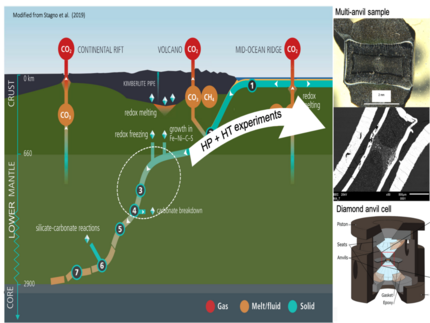Verständnis der Stabilität von Karbonaten im unteren Mantel
Es wird vermutet, dass Karbonate wichtige Mineralien sind, die für den Transport von Kohlenstoff von der Erdoberfläche in das tiefe Innere der Erde verantwortlich sind. Das Verständnis ihrer Stabilität und ihrer chemischen Wechselwirkungen in großen Tiefen ist entscheidend für das Verständnis der Speicherkapazität und des Kohlenstoffflusses in das Erdinnere. Da nur wenige winzige Proben des unteren Erdmantels an die Oberfläche gelangen, müssen wir die Druck- (Gigapascal) und Temperaturbedingungen (≥ 1500 K) im Erdinneren mit hydraulischen Mehrstempelpressen und Diamantstempelzellen simulieren. Die in diesen Experimenten beobachteten Ergebnisse, die Mineralphasen und ihre Zusammensetzung, erweitern unser Wissen über den tiefen Kohlenstoffkreislauf.

